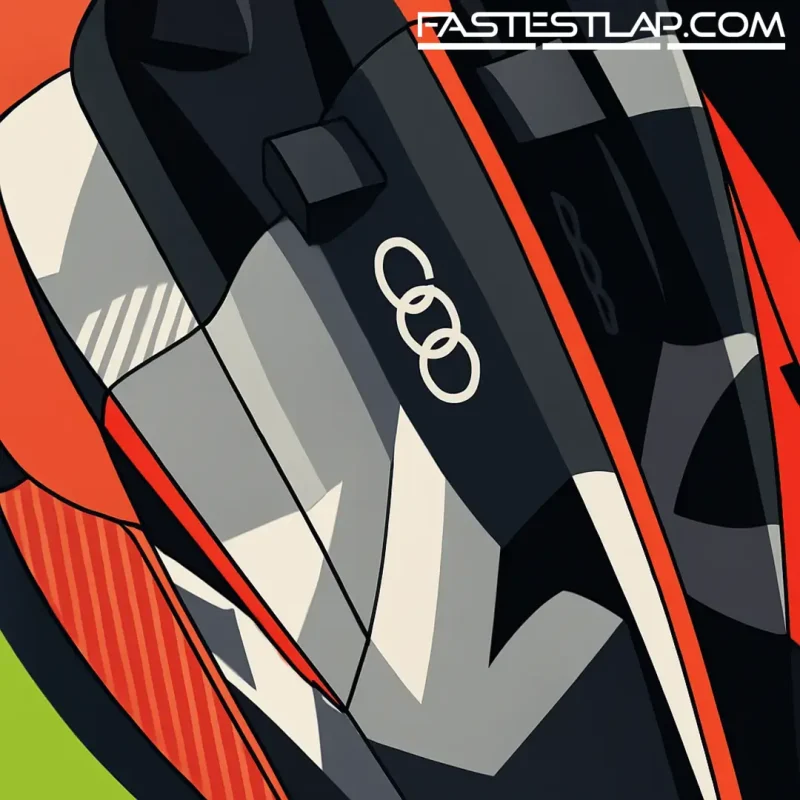Audi’s 2026 engine is already pounding laps on the dyno. Don’t expect power bragging just yet.
Sauber team principal Jonathan Wheatley says Audi’s first Formula 1 power unit is where it needs to be — with the focus firmly on bulletproofing rather than headline numbers — as the brand gears up for its full works debut under the 2026 rules.
“It’s a hugely busy time for every Formula 1 team and everyone’s focus naturally turns to 2026,” Wheatley said in Baku. “We are on schedule with our dyno program. The engine’s been on the dyno for a while now. The focus now is on reliability because we’ll be running the car in an incredibly short period of time.”
Crucially, Audi will bolt powertrain to chassis for the first time in December — a key moment in any new-constructor timeline. “It’s an exciting period in the Audi F1 project, obviously mating chassis and powertrain together for the first time in December,” Wheatley added. “Our simulator program naturally starts to lean towards 2026 as well. But… it’s a little bit too early to talk about performance. We won’t really know any of this until the first qualifying session and the first race in Melbourne.”
Audi completed its takeover of Sauber at the start of the year and will rebrand the outfit for 2026, entering as one of five power unit manufacturers under the new regulations alongside Mercedes, Ferrari, Honda and Red Bull Powertrains-Ford. Those rules shift the balance to roughly 50% electrification with sustainable fuels and open the door for active aerodynamics — a reset that promises to reshuffle the deck, particularly on the engine side.
It’s no secret the paddock believes Mercedes has stolen an early march, a familiar storyline given their 2014-era playbook that yielded eight straight Constructors’ crowns. The rest? Whispers suggest varying degrees of catch-up, and at least one program wrestling with its fuel pathway. Audi’s stance, publicly at least, is pragmatism: make it run, then make it quick.
That mindset mirrors its hires. Wheatley arrived from Red Bull in April, bringing hard-nosed race ops experience to Hinwil. Mattia Binotto, the former Ferrari boss, is now wearing a dual COO/CTO hat; before running Maranello, Binotto’s reputation was forged in the engine department, a detail not lost on anyone watching Audi’s powertrain push.
The timeline is tight. 2026 cars will be wildly different in concept, integration and packaging, and the first fire-up in a chassis is more than ceremonial — it’s when all the beautiful CAD drawings meet the realities of heat, vibration and harness routing. Getting that done before the holidays gives Audi a fighting chance to get on top of early niggles before launch season.
Meanwhile, Sauber’s 2025 season has some tailwind. The team has dragged itself away from last year’s basement and into the midfield scrum, with momentum under the new leadership structure and a standout Silverstone podium from Nico Hülkenberg that snapped a long dry spell. It’s the kind of result that makes the factory buzz and the recruitment calls a little easier.
None of that changes the size of the 2026 task. New fuel, new ERS balance, new aero, new active systems — and a grid full of rivals who’ve done this dance before. But Audi’s approach feels clear-headed. Reliability first, correlation second, performance last. If that sounds unglamorous, it’s also how you avoid wasting your first season chasing gremlins.
The first real answers arrive in Melbourne next March. Until then, the story is told in test cell hours, calibration files and that December marriage of chassis and PU. Quiet progress suits Audi fine. When the lights go out in 2026, we’ll find out how quietly they’ve been moving.




